Properso Klein

Probing the conductance of molecular contacts
Molecular contacts
Metallic wires of atomic section can act as electrical contacts for the measurement of a single molecule conductance. While working in solution, after the breaking of the atomic wire, one can observe conductance plateaus well below G0. These plateaus are attributed to 2 atomic wires connected by one or few molecules.
Using an STM in break-junction mode
During the stretching, the gold wire is elongated, as molecule/gold binding is stronger than Au/Au binding. It thus gives access to the conductance of single molecules.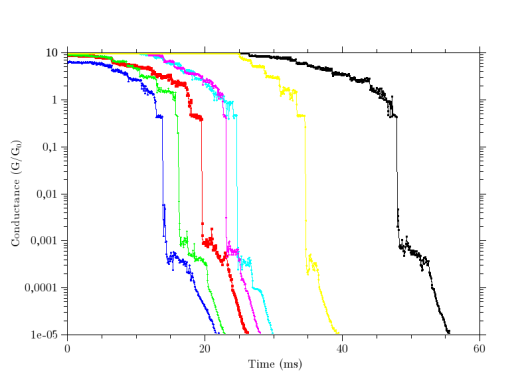
Conductance variation during the stretching of a Au / bipyridine / Au junction in a STM-BJ setup.
The curves exhibit sub G0 conductance values around G= 3.10-4 G0. These values are attributed to the conductance of a single molecule.
Using a Mechanically Controlled Break Junction
We present an original method to estimate the conductivity of a single molecule anchored to nanometric-sized metallic electrodes, using a Mechanically Controlled Break Junction (MCBJ) operated at room temperature in liquid. We record the conductance through the metal / molecules / metal nanocontact while keeping the metallic electrodes at a fixed distance.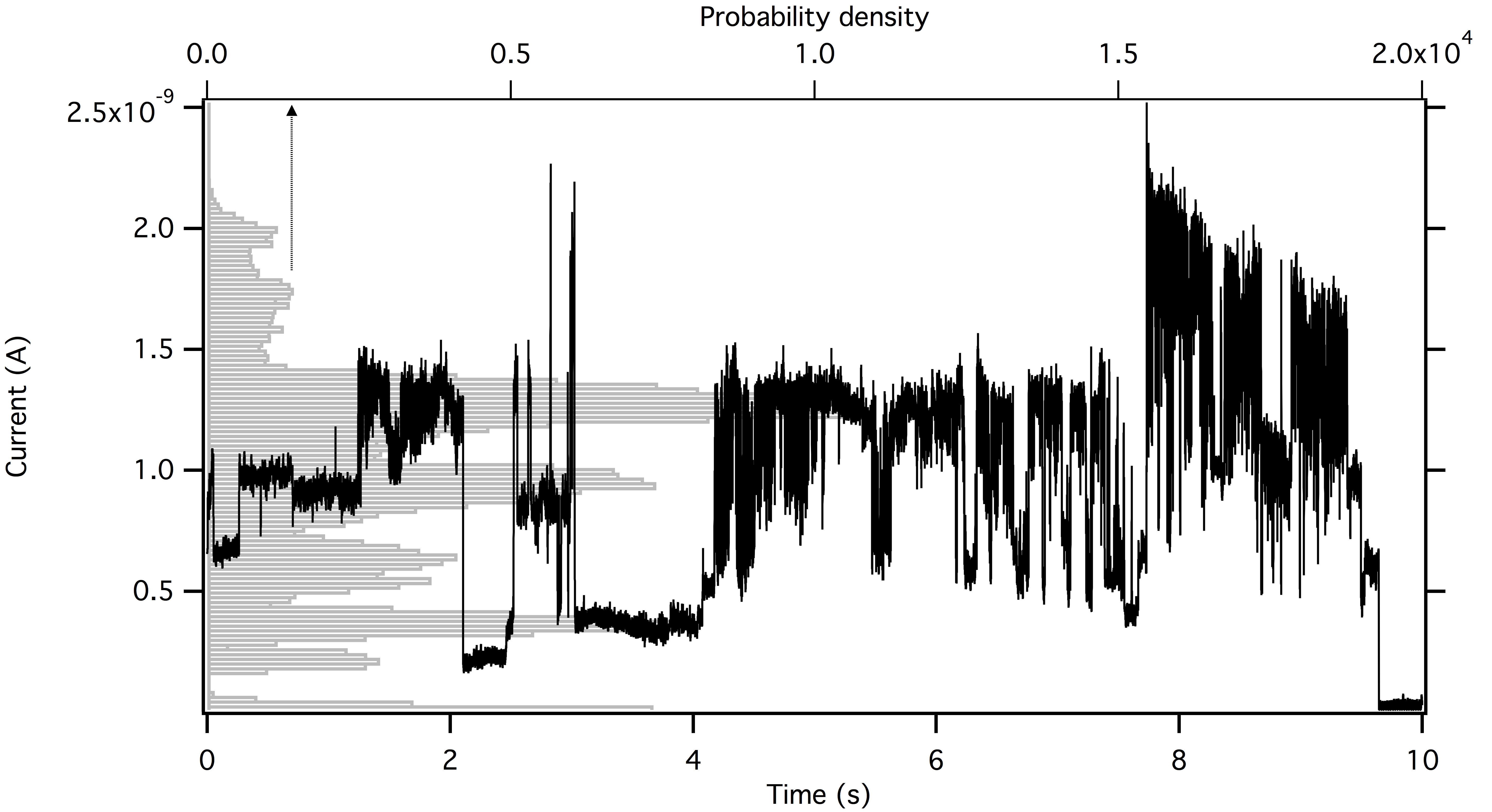
Spontaneous evolution of the current of a molecular contact formed from a millimolar solution of octanedithiol.
Prior to recording, the junction is operated for 2 hours in pure solvent. The recording starts 5 minutes after the junction is refilled with the ODT solution. The electrode separation is fixed with a setpoint current of 0.5nA before the regulation feedback is disabled (see text for more details). Current (black continuous line) is recorded, and a bias of 139mV is applied to the junction. A histogram of the current (gray) clearly indicates the most probable current values.
Taking advantage of thermal diffusion and electromigration, we let the contact naturally explore the more stable configurations around a chosen conductance value. The conductance of a single molecule is estimated from a statistical analysis of raw conductance and conductance standard deviation data for molecular contacts containing up to 14 molecules.
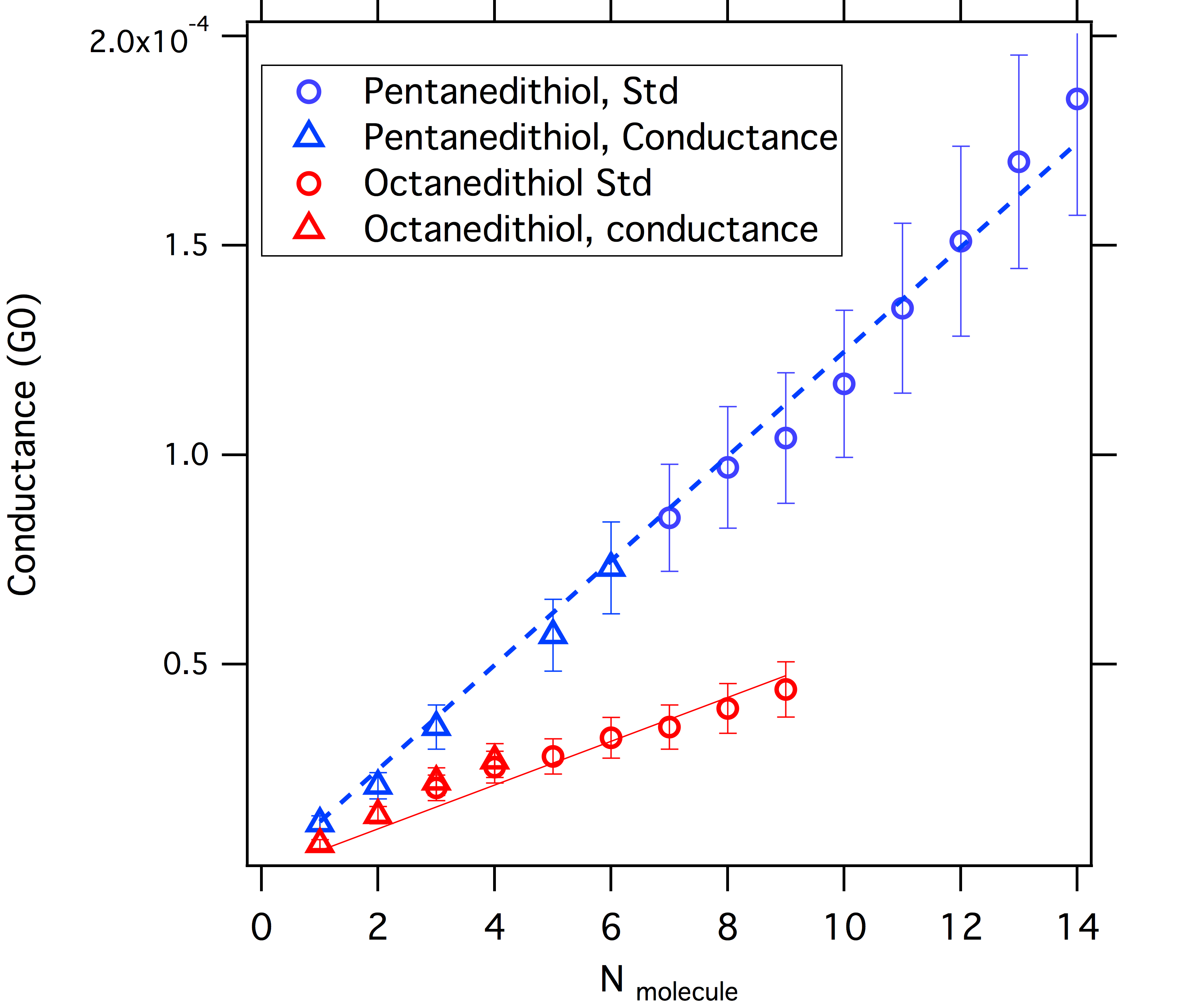
Conductance values corresponding to a discrete number of molecules in pentane and octanedithiol contacts
. The plot gathers data extracted from the statistical analysis of several experiments. It shows that the conductance values are in excellent agreement. From linear fits we estimate the conductance of a single molecule to be 1.25E-5 +/- 0.19E-5 G_0 for pentanedithiol and 5.27E-6 +/- 0.22E-6 G_0$ for octanedithiol.
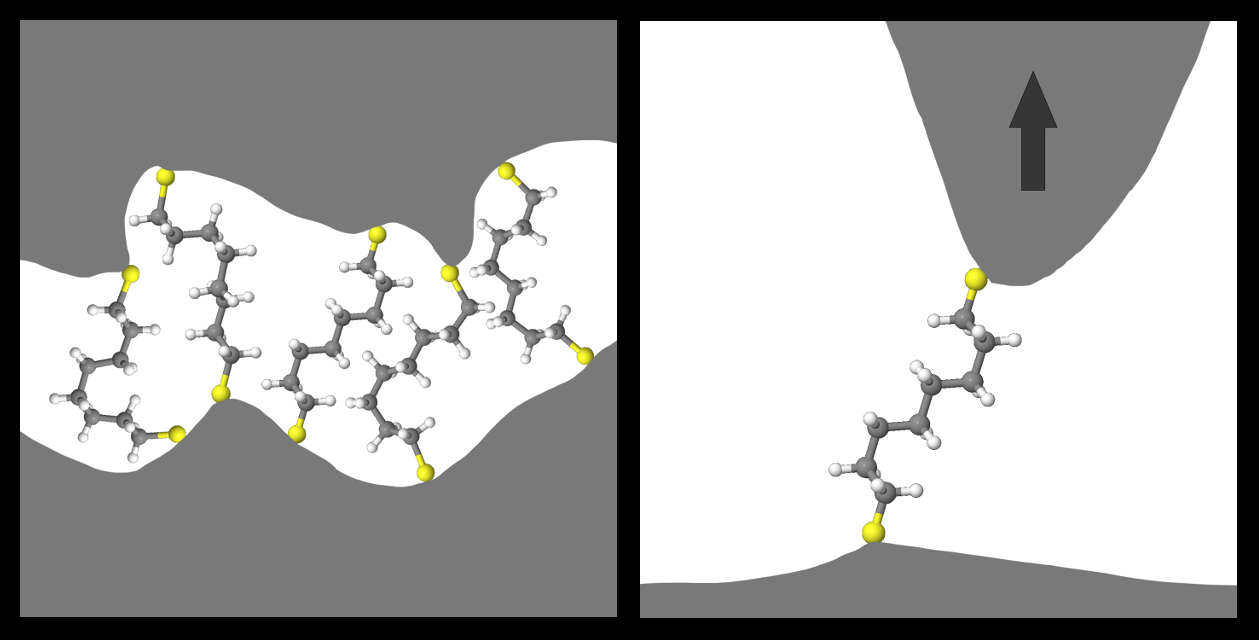
The single molecule conductance values are interpreted as time-averaged conductance of an ensemble of conformers at thermal equilibrium.
More details
ANR project FOur STate device : non volatile memory based on conformationnal change
Project FOST, funded by ANR for 3 years. Molecular-scale electronics have attracted a growing interest, both for basic science at the nanoscale and for possible applications in nano-electronics. In the first case, molecules are quantum objects by nature and their properties can be tailored by chemistry opening avenues for new experiments. In the second case, molecule-based devices are envisioned to complement silicon devices by providing new functions or already existing functions at a simpler process level and at a lower cost by virtue of their self-organization capabilities. The most common approach is to use redox molecules to store charges like in flash-memory. We propose an interesting alternative which stores information by tuning the conformation of an organic molecule. Previous works have shown that upon a given excitation, molecules can undergo conformational changes. If such conformers are associated with conductivity levels of the molecule, this effect can be used to make molecular switches and memories. In this project, we aim at extending the concept of conformational memory by synthesizing dedicated molecules with two addressable subunits that can undergo conformational changes upon irradiation and / or protonation. Such molecules would present 4 different electronic states (i.e 2 bits memory), that could be used for implementing basic logic function at the single molecule scale. The properties of the candidate molecule have been studied in solution, and the challenge is now to demonstrate the presence of these 4 possible states for a molecule grafted to a solid surface.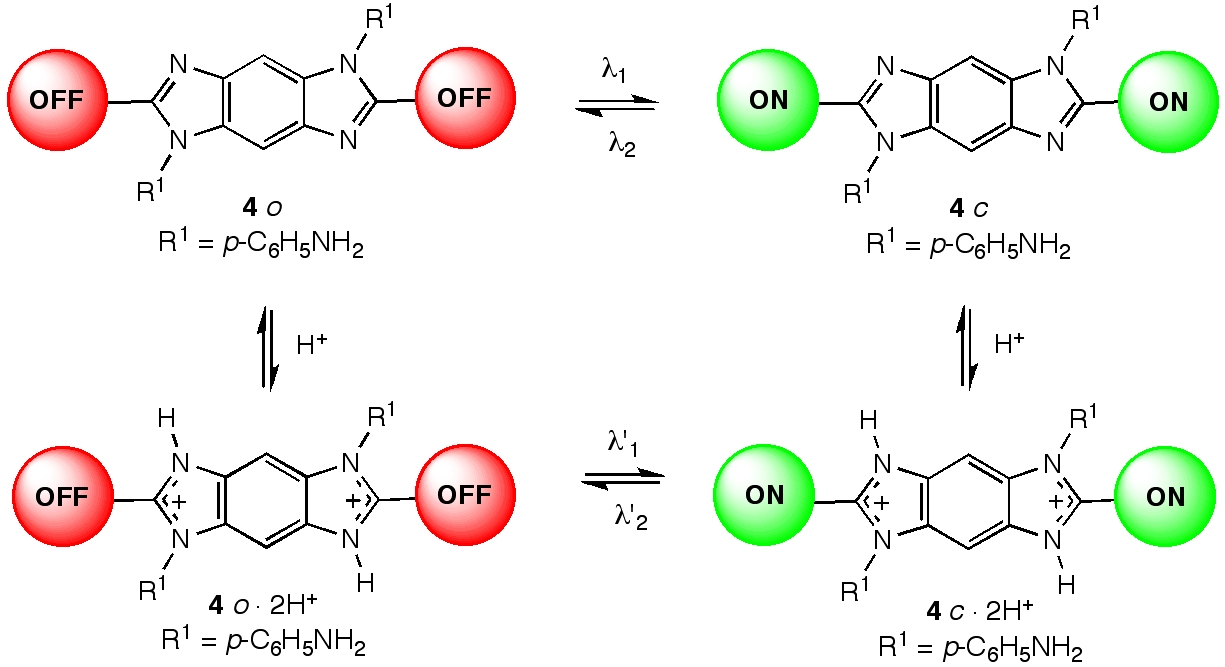
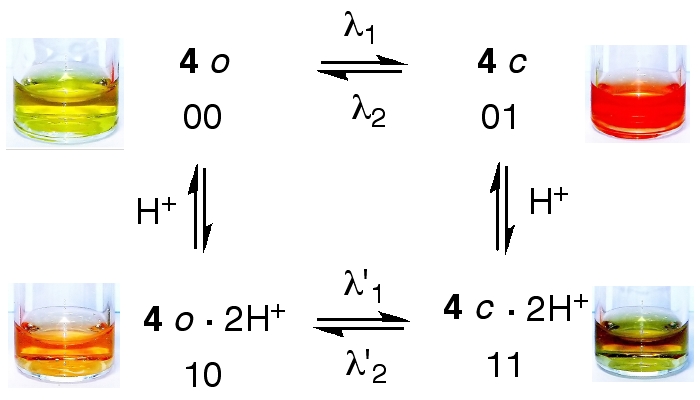
Molecular switch sensible to chemical and light stimuli obtained by the integration of a photochromic moiety to an acidochromic core
absorption responses of 4 upon protonation and / or irradiation
contact : webmaster@cinam.univ-mrs.fr
